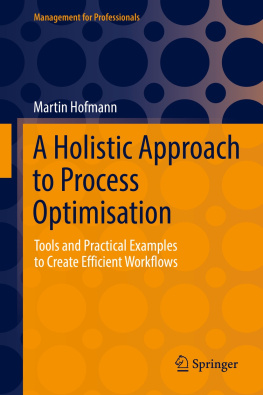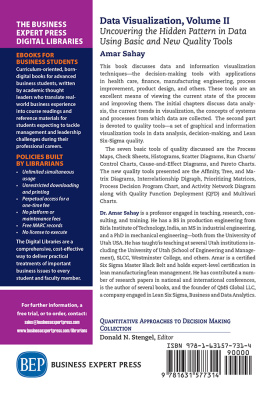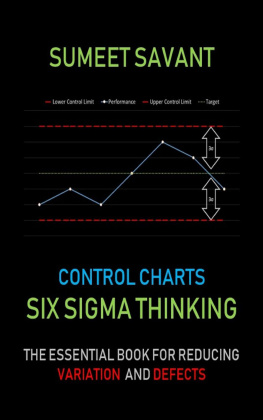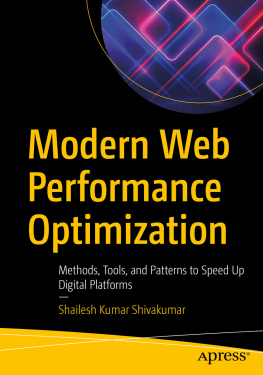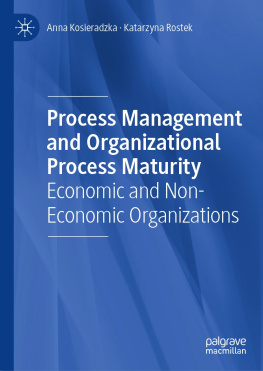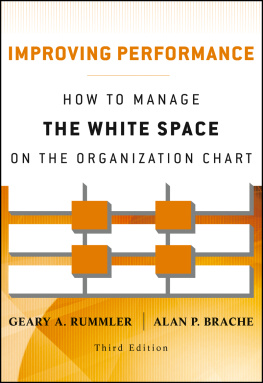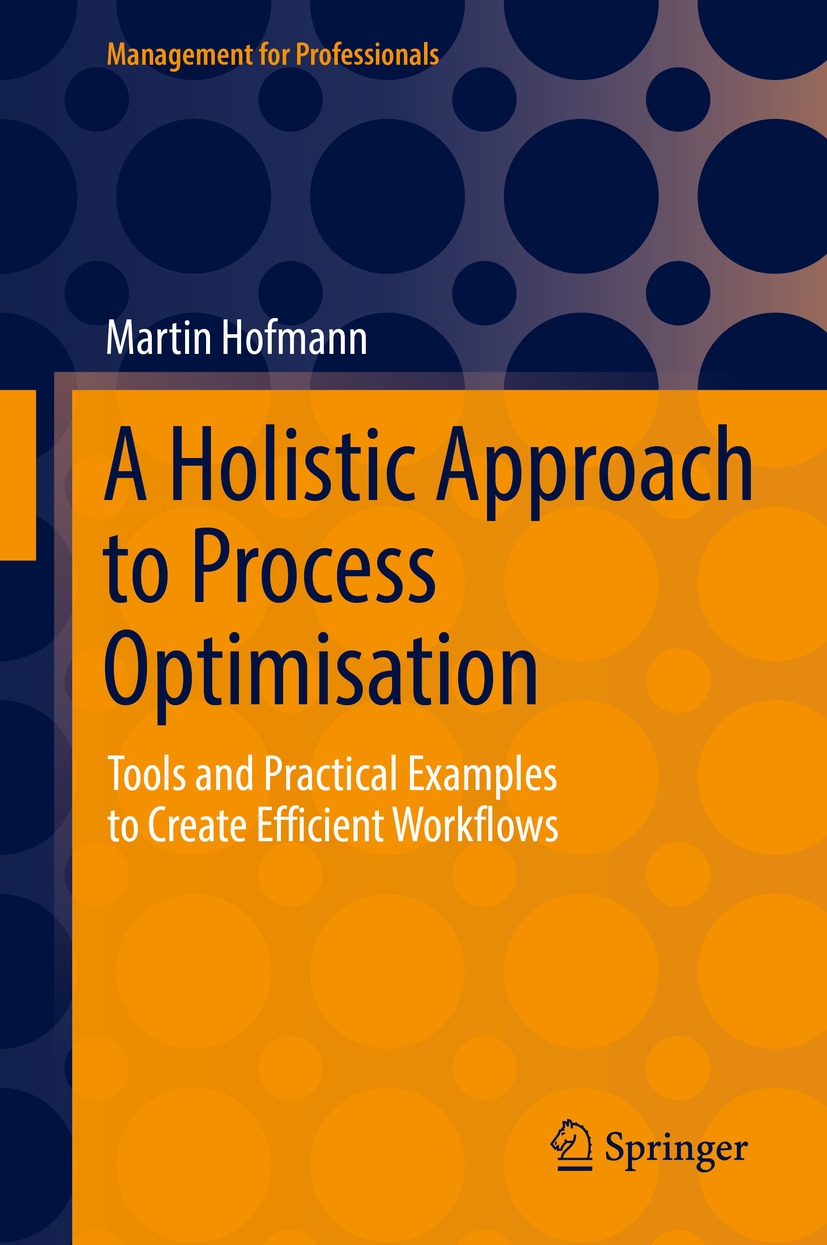Management for Professionals
The Springer series Management for Professionals comprises high-level business and management books for executives. The authors are experienced business professionals and renowned professors who combine scientific background, best practice, and entrepreneurial vision to provide powerful insights into how to achieve business excellence.
More information about this series at http://www.springer.com/series/10101
Martin Hofmann
A Holistic Approach to Process Optimisation
Tools and Practical Examples to Create Efficient Workflows
1st ed. 2021

Logo of the publisher
Martin Hofmann
Zug, Switzerland
ISSN 2192-8096 e-ISSN 2192-810X
Management for Professionals
ISBN 978-3-658-34096-4 e-ISBN 978-3-658-34097-1
https://doi.org/10.1007/978-3-658-34097-1
Springer Fachmedien Wiesbaden GmbH, part of Springer Nature 2021
This work is subject to copyright. All rights are reserved by the Publisher, whether the whole or part of the material is concerned, specifically the rights of translation, reprinting, reuse of illustrations, recitation, broadcasting, reproduction on microfilms or in any other physical way, and transmission or information storage and retrieval, electronic adaptation, computer software, or by similar or dissimilar methodology now known or hereafter developed.
The use of general descriptive names, registered names, trademarks, service marks, etc. in this publication does not imply, even in the absence of a specific statement, that such names are exempt from the relevant protective laws and regulations and therefore free for general use.
The publisher, the authors and the editors are safe to assume that the advice and information in this book are believed to be true and accurate at the date of publication. Neither the publisher nor the authors or the editors give a warranty, expressed or implied, with respect to the material contained herein or for any errors or omissions that may have been made. The publisher remains neutral with regard to jurisdictional claims in published maps and institutional affiliations.
This Springer imprint is published by the registered company Springer Fachmedien Wiesbaden GmbH part of Springer Nature.
The registered company address is: Abraham-Lincoln-Str. 46, 65189 Wiesbaden, Germany
Indeed, many business processes contain the potential for optimisation. When you hold this book in your hands, you have already taken an important step. In this book, you will receive simple, clear and feasible instructions on how to develop low-waste, sustainable and competitive processes for your company. It is crucial that you do this together with your employees. I wish you every success with it!
Markus Bertschi, Lean Six Sigma
Master Blackbelt, Facilitation & Consulting
Preface
Advancing globalisation and the rapid technological progress of recent years are strongly shaping our economic environment and leading to ever more rapid change. Thanks to new technologies, customers have access to new shopping channels 24 hours a day, 7 days a week! As such, new digital possibilities and ways to create and distribute their products and services more quickly and efficiently are opening up to companies.
This rapid change means that work processes in companies no longer remain stable over a long period of time and have to be constantly revised instead. This is one of the reasons why various methods of improvement management are being used more and more. These methods have their origins in the production sector, where they have been successfully applied for a long time. Increasingly, however, they are also being used to improve work processes outside of production.
Yet simply copying the approach from the production sector and applying it to the administration does not usually lead to the desired success, as the necessary holistic orientation and the required framework are often lacking. The basis for the continuous improvement of work processes is the corporate culture defined and exemplified by the company management with the corresponding framework conditions. Only when this is anchored in the company and lived by all those involved, the various methods with the corresponding tools can be used effectively and sustainably.
This book provides the necessary theoretical basis and ensures its transfer into everyday life. In the first part of the book, the basics are taught; the reference to practice is established in the second part.
Detailed structure of the book:
Part I: BasicsChapter: Vision of Efficient Processes
As an introduction, the history and vision of the ongoing improvement and more efficient design of existing workflows are highlighted.
Chapter: Prerequisites and Framework Conditions for a Successful Improvement Culture
This chapter deals with the prerequisites that must be anchored in a company in order to establish a successful improvement culture.
Chapter: Process Improvement Methods
The most important methods for improving work processes are presented and contrasted.
Chapter: Tools for the Optimisation of Workflows
The most common tools from the methods discussed in the previous chapter are presented and their applications explained.
Chapter: Influence of Digitalisation on Process Optimisation
This chapter focuses on the increasing influence of digitalisation on the ongoing optimisation of existing workflows.
Part II: PracticeChapter: Putting Process Optimisation into Practice
Concrete examples from practice are used to illustrate how improvement projects can be successfully implemented in everyday life.
Chapter: Simulations to Illustrate the Improvement Methods
Finally, several simple simulations are presented, which are used in teams and groups for team building and for a better understanding of efficient work processes.
In addition to conveying the theoretical basics, it is my particular concern with this book to pass on concrete experiences from my everyday professional life to the readers by means of practical examples.
In order to give even more weight to this aspect and to emphasise the reference to the daily challenges in particular, two interviews with experts are included in the book. Stephan Spada deals with the optimisation of work processes aided by the Kaizen method on a daily basis in his professional work and is therefore very familiar with the topic and the requirements. Kateryna Brnnimann successfully accompanied the development and testing of a new maturity model.
Enjoy reading the book and applying it in practice.
Martin Hofmann
Zug, Switzerland
July 2021

